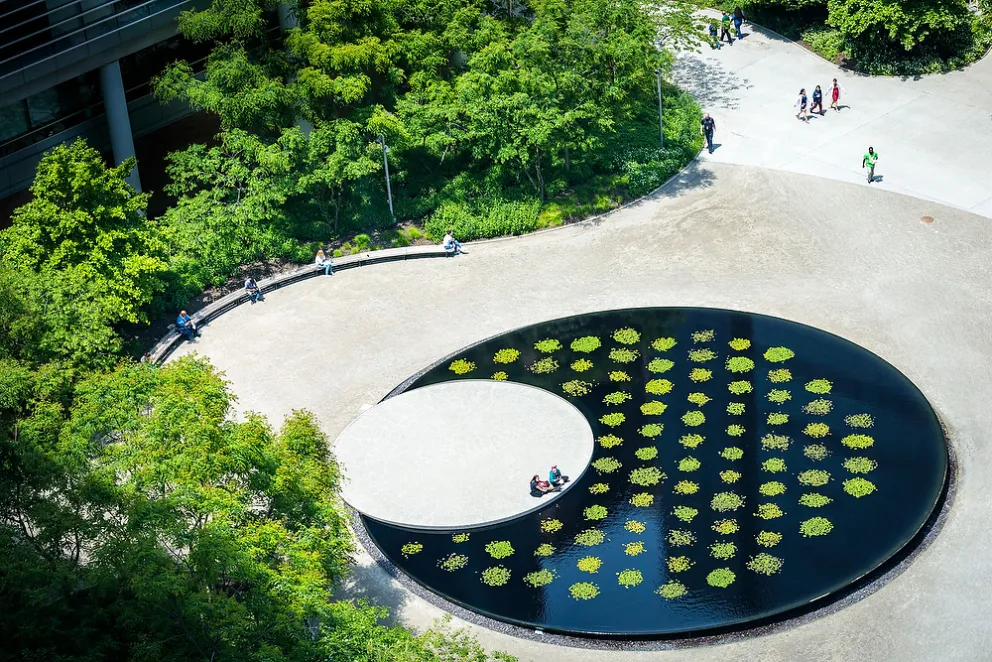
(photo by Matt Miller) Hope Plaza at Washington University in St. Louis School of Medicine. This is the second in an occasional series of member profiles, where we learn a little more about the staff and campuses of our member institutions. (See the first member profile)
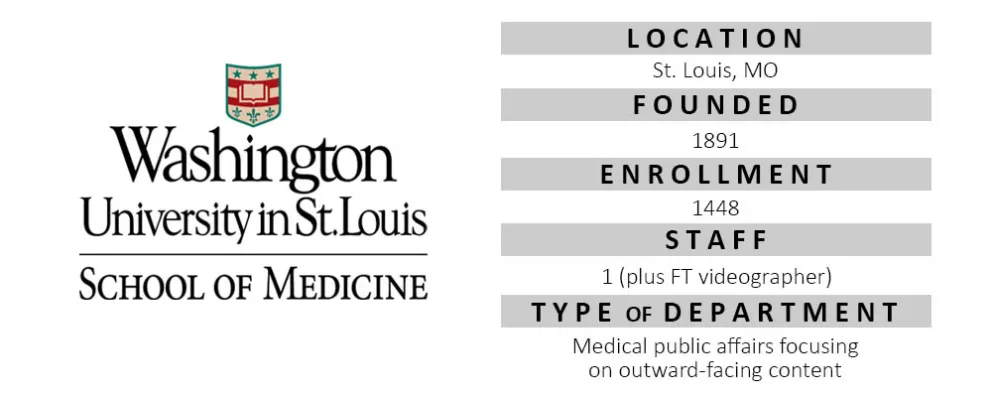
Washington University School of Medicine is the medical school of Washington University in St. Louis. The campuses and the marketing staffs are separate for each. The medical school campus photographer is Matt Miller.

(portrait photo by Huy Mach) For many years, I loved working at the Omaha World-Herald, where I spent a few years working for perennial MIC award-winner Craig Chandler. I felt like a local National Geographic photographer — I could poke around the state for a week or more, taking photos for a few stories and whatever else looked interesting. I spent about 18 months working on a story of a highway that ran the length of the state. I did a feature on a 100-year-old farmer. Flooding. Teen suicide. It seemed I was always working on a small picture story. I covered tons of sports, politics, Warren Buffett and weather. I got to travel overseas for a couple stories. And I started to struggle with disillusionment as the photojournalism world I had always known was fading away.
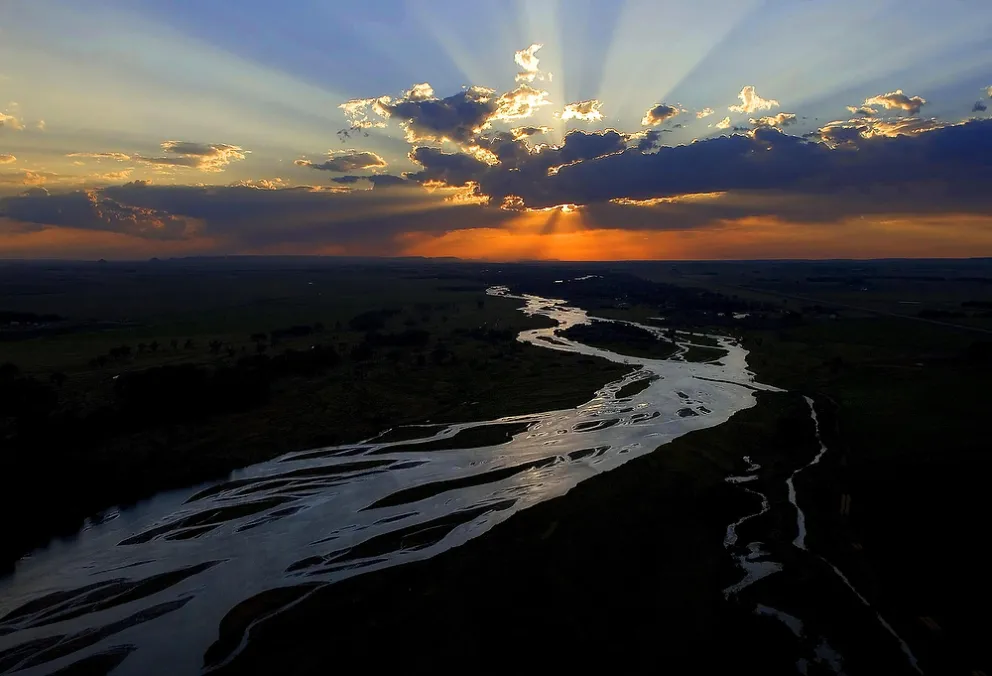
(photos by Matt Miller) Photos from Matt's time at the Omaha World-Herald: Above, the Platte River, the "flat water" from which the state of Nebraska gets its name. Below, the day-to-day of a newspaper photojournalist: Wild art, high school football and a sports feature at a Husker football game.
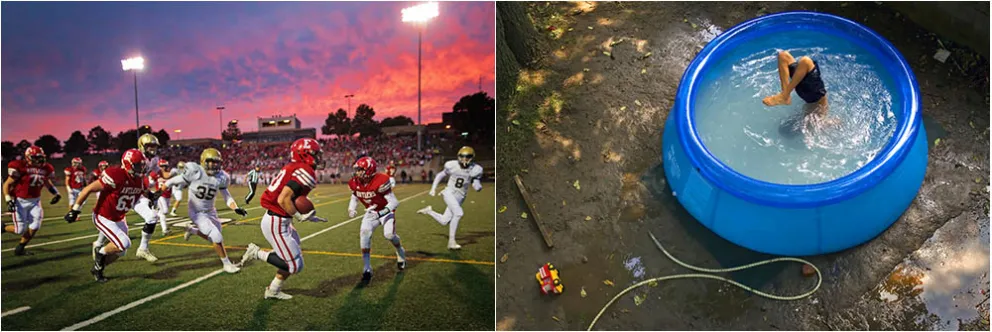
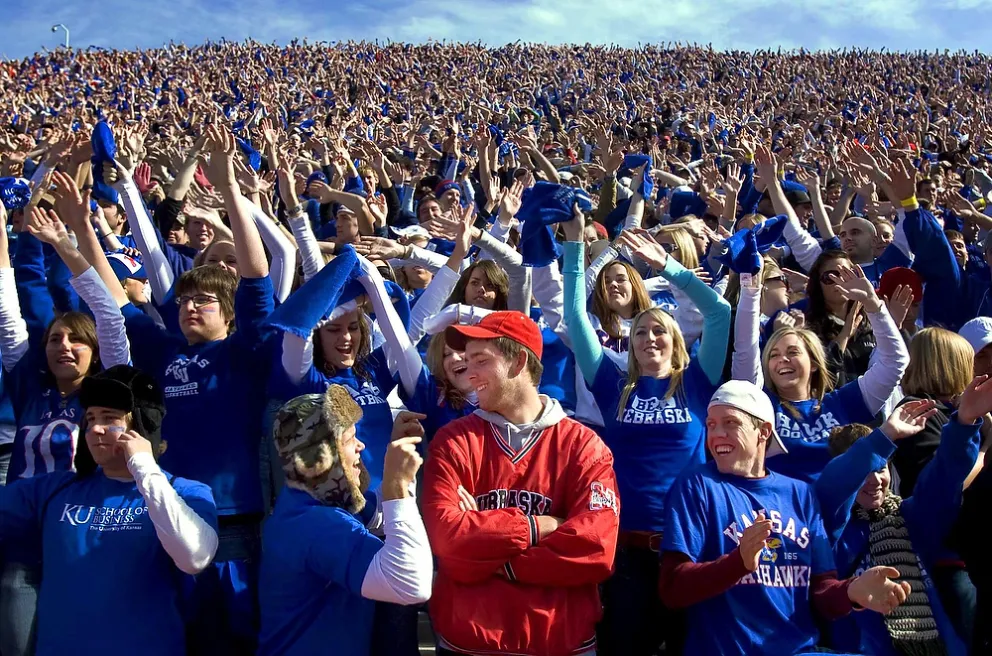
In the summer of 2017, my wife was approached about a position in St. Louis. Shortly after we moved, a job was posted for a photographer at one of the world's most prestigious medical schools. They wanted someone who was a “visual storyteller.” I was interested, and so were they. I started working the week of Thanksgiving 2017.
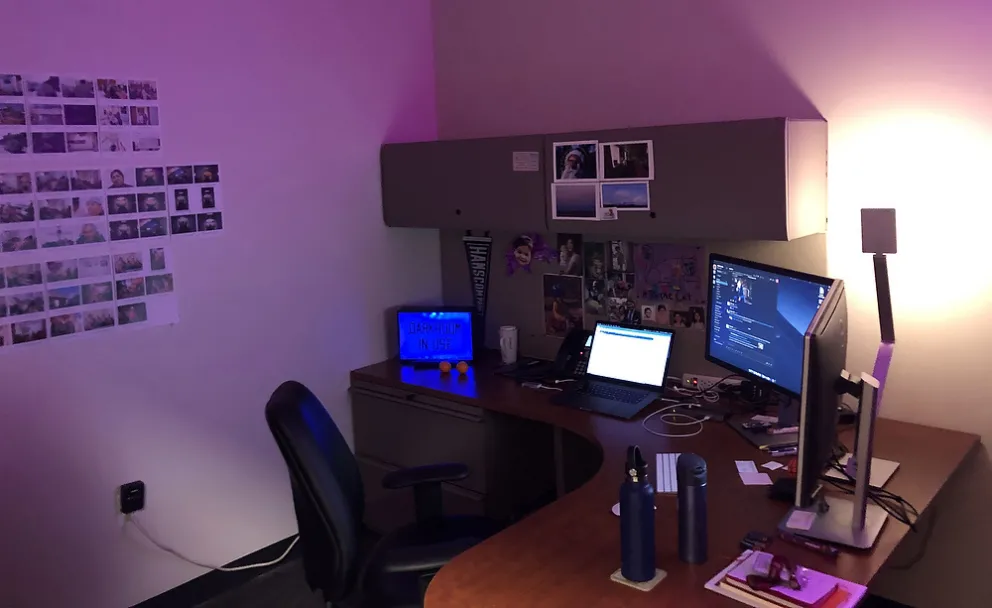
(photo by Matt Miller) "It's been awesome to have an office," says Matt. "I didn't have one at the paper, and was never in the office there, anyway. It's usually quite dark, but I have added grow lights recently and am trying to have plants to give the cave some life. On the wall are some small prints from a project-- just trying to whittle it down and look for patterns to avoid the editing mistake from the lab photo essay."
My day-to-day tasks as a medical photographer at Washington University School of Medicine in St. Louis aren’t much different from working at a mid-major newspaper, but the overarching goals are different.
- I used to work around the schedule of a very important head football coach. Now I’m working around the schedules of very important MDs (but, hey, at least they are saving lives).
- I had to try to figure out how to transmit pictures with no mobile service on deadline, but now I’m trying to figure out how to photograph a PhD in a level three TB lab (hint, fake it in another lab).
- I used to get calls to run out to pre-dawn fires on Christmas morning, but now I enjoy breakfast with my family. (So maybe there are some important differences!)

(photos by Matt Miller) Left: Dozens of people participate in a Yoga Buzz session, June 2018. Right: Medical students participated in their final day of dissection in anatomy, December 2018.
I’m still somewhat new to the academic photography world, but it does seem like my job varies from other university-wide photogs. My time is split between the news portion of the office that does press releases and the integrated marketing and branding side of the office. Different medical school departments or groups can request photography, but our office really tries to use my time strategically. I’m grateful that I don’t photograph many banquets, nor do I do MD headshots. Some of the most rewarding work has been covering the white coat ceremony, getting to spend time talking with some of the smartest people I could imagine meeting, and photographing a research team as they published their first major paper.
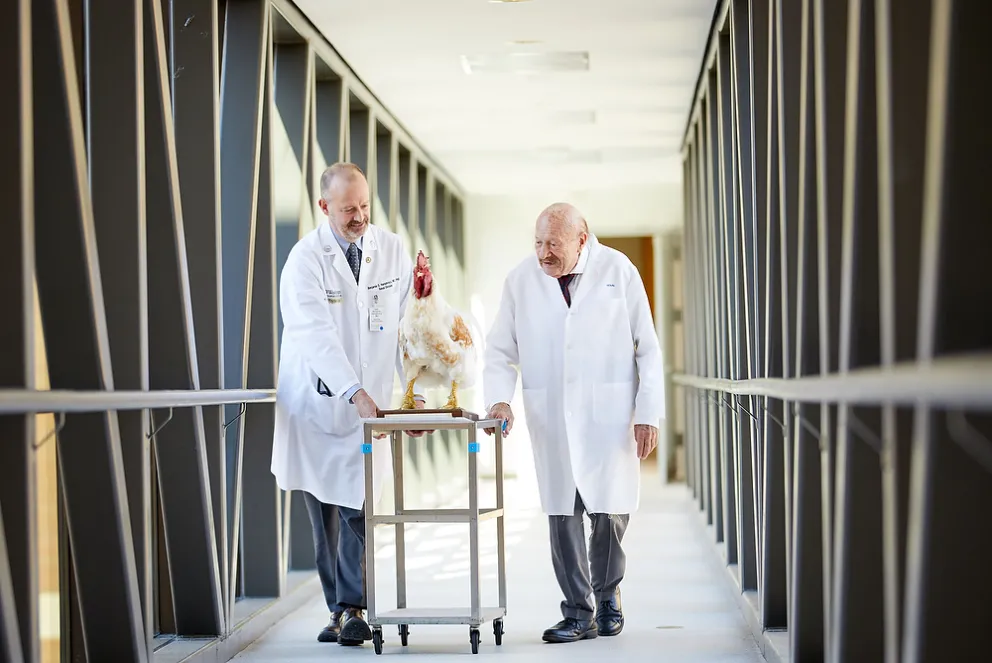
(photo by Matt Miller) Benjamin Humphreys, MD, PhD, and Eduardo Slatopolsky, MD, move Macho from their seventh floor Wohl Clinic labs to their new facility. Macho was a 17-pound rooster used in antibody research that helped develop a bone disease treatment for patients with chronic kidney disease. (This photo was 4th place in 'science and research,' in the November 2019 MIC.)
Last fall, a writer and I went to Guatemala for a few days to highlight some collaborative work WashU is doing there to improve cancer treatment. The previous year, a writer went to Bangladesh, so fingers crossed, more of these types of trips will happen and involve me! I love the opportunity to meet new people and see new places. I was lucky to get to do quite a bit of travel as a photojournalist, so this was a welcome surprise. Opportunities like this help keep me excited about photography because it brings new challenges that I don't normally tackle day in and day out. It also allows me to do more "editorial" photography and logistics that I used to enjoy doing a lot.
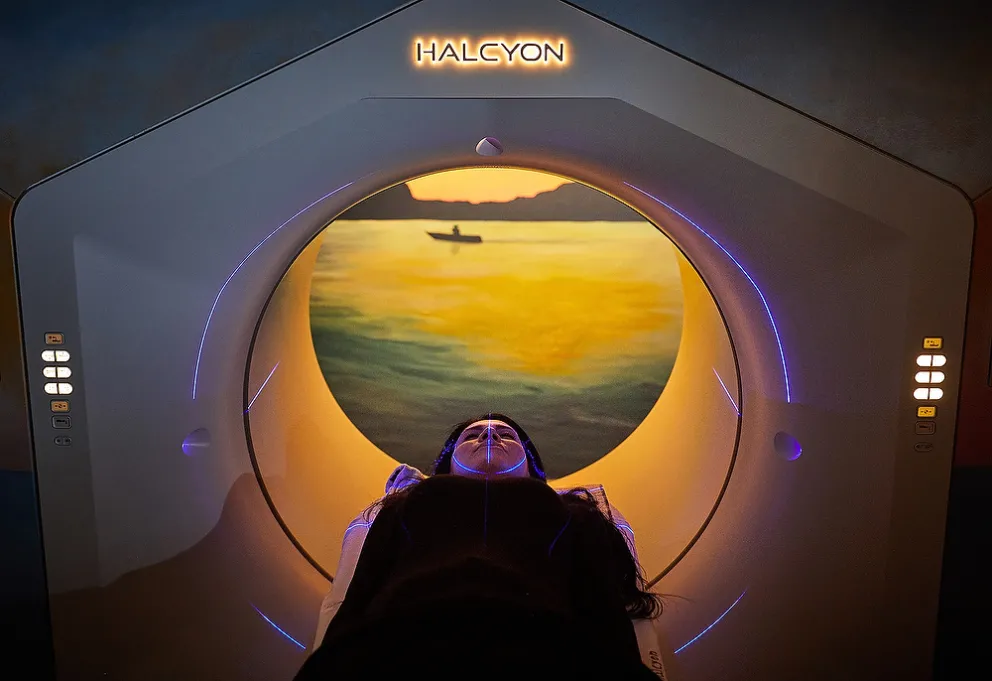
(photo by Matt Miller from the story in Guatemala) In Guatemala, Liga Nacional Contra el Cancer/Instituto Nacional de Cancerologia (LIGA/INCAN) in Guatemala City is the only comprehensive cancer treatment center for the poor and underserved. A state-of-the-art radiation therapy machine at the institute enables thousands of patients to receive without delays the same high-quality radiation treatment available in the U.S. (This was an award winner in the 'Science and Research' category in the December 2019 MIC.)
Generally, when I arrange a photo shoot with a principal investigator (PI) in a lab, we set a time for the PI to come into the lab with their staff to “collaborate” on bench work. I have learned that the PI typically is not the person doing the actual hands-on research. Instead, they’re the ones overseeing the research, mentoring scientists and securing funds to keep the lab running. On the day of the photo shoot, I show up early to set up lights and scope out the lab. Often, once the scientists get used to the flashes going off, they enjoy some time to focus on the details of their work with the PI. Although I can get realistic images, it’s rare to get a moment of spontaneity from this contrived situation.
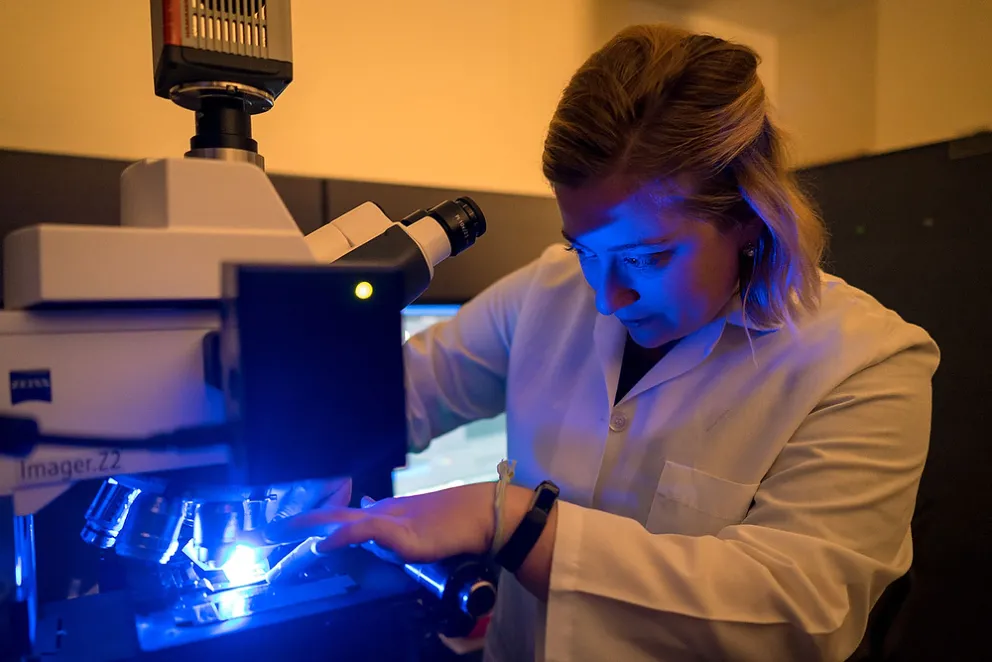
(photos by Matt Miller) Above: Sarah Waye, from Samantha Morris' lab, images cells on the fluorescent microscope. Below: Christopher J. Dy, MD, MPH, and his son. Faculty were recognized at the Distinguished Service Teaching Awards Ceremony.
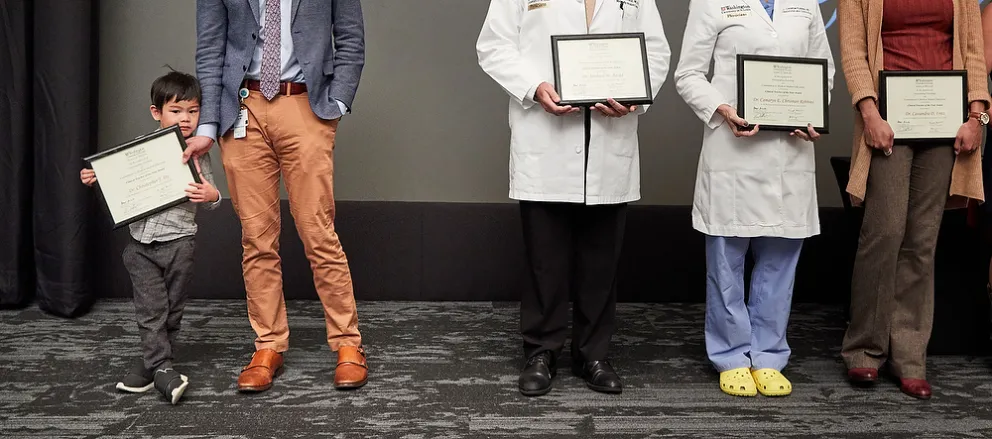
I felt like if I spent more time in a lab, I could capture better moments and more engaging photos. It was challenging to find the appropriate subject, but it seemed promising when I went to Samantha Morris’ lab website and her research was explained “in plain English.” I was incredibly fortunate. She was open to the concept of me occasionally dropping by and hanging around the lab. She’s awesome, and so was everyone on her team. Once the project was underway, they called if they felt something interesting may happen. This little project also helped me settle at the school. For several months, I spent more time with them than I did people in my office. I could ask them relatively simple questions about science or the goings-on here and not feel judged. My timing also worked out well because it coincided with the Morris lab’s paper getting published in Nature, the world's leading multidisciplinary science journal. We were able to use the photos in the news release about that paper, my photo essay was published in our alumni magazine, we used it in another marketing campaign, and a smattering of photos got used in other projects. One of the more unusual photos that came from this project is a moment when a post-doc was using dairy creamer as a contrasting agent on stained cells. You can’t set that stuff up!
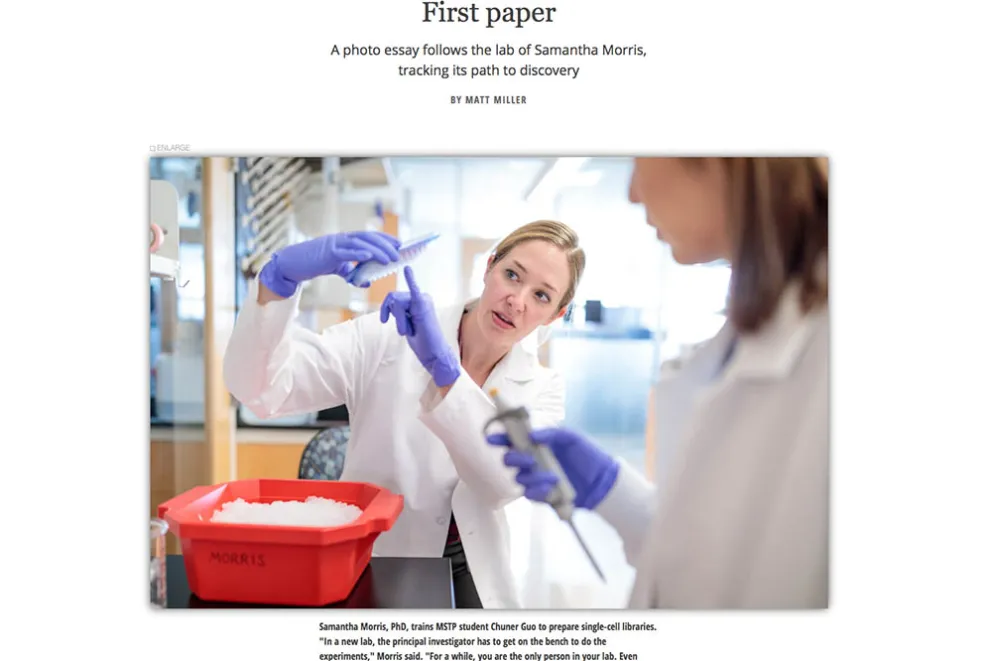
(photos by Matt Miller) Above and below: The photo essay as published on the website, and excerpts from the story. "I wanted to apply some of the patience and planning that I've used in photojournalism to capturing special moments in a basic science lab," said Matt.

Looking back at the effort and the many photos, I do wish I had edited them differently because nearly all of the published images were taken from a similar distance and lens. However, the project seemed successful in that it conveyed Washington University as a great place to do science. This picture story looks more authentic than a set of “marketing” images. It’s not just some people in white coats holding pipettes or pointing at screens. It’s people working together, smiling together and collaborating on goals. I hope people look at these images and think WashU is a place they’d like to be.
_________________________________________________________
"Why are doctors always calm? Because they have a lot of patients!" Submissions, suggestions welcome any time, email editor Matt Cashore, mcashore@nd.edu. Follow UPAA on Instagram, too!